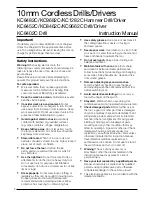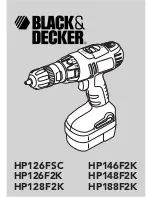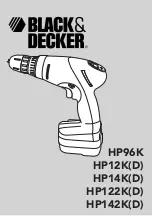
10
5
TROUBLESHOOTING
The following chart is intended to assist with troubleshooting the Hydraulic Rock Drill. While not all inclusive, the chart
outlines the most common causes of a problem and the recommended course of action.
The troubleshooting guide for the associated power supply is in the instruction manual specifically for this unit.
SYMPTOM
CAUSE AND CORRECTIVE ACTION
Rock Drill does not rotate—pressure does not
build up when trigger is activated.
No or incorrect flow or pressure—check flow and pressure as
described in Section 3.4.
“P” and “T” hoses interchanged—check connection. Standard
connection has oil flowing from male quick release coupling into
female quick release coupling. The tail-hose of the Rock Drill P
connection is fitted with female coupling.
Insufficient activation of trigger valve—replace defective parts.
Rock Drill does not rotate—pressure is built up
when trigger is activated.
Back pressure too high—make direct tank connection. Maximum
back pressure is 215 psi (15 bar) measured at the Rock Drill. See
Section 3.4.
Quick release coupling in return line defect—locate and replace
defective coupling.
Striking piston sticks—push the breaker hard against the drill.
Grease nose assembly as described in Section 4.2.
Striking piston sticks possibly due to thickening of cylinder:
1.
Chamfer/polish slightly the edge at the cylinder dashpot
where the cylinder bore changes size.
2.
Check oil viscosity. Thin oil increases the risk of cylinder
thickening.
Spool/reversing spool or auxiliary spools stick—dismount and check
that all parts move easily. Polish slightly if necessary.
Seals defect—dismount, check, and replace.
Drill runs weakly or erratically.
Insufficient flow—check flow and pressure.
Seals defect—replace seals.
Wear, internal leakage:
1.
Dismantle, check and replace defective or worn parts.
2.
Check purity of oil and oil viscosity at working temperature.
Thin oil can cause increased internal leakage.
Incorrect tool steel length—refer to Section 2.2.
Hoses pulsate.
Accumulator defect—replace accumulator diaphragm and charge
with nitrogen.
Oil leaking from drill.
Defective seals—replace seals.
Drill falls out.
Worn latch—replace latch and roll pins.
Worn drill bushing or drill—replace bushing or drill.
Incorrect tool steel in use (wrong hex size or collar diameter)—refer
to Section 2.2.










































